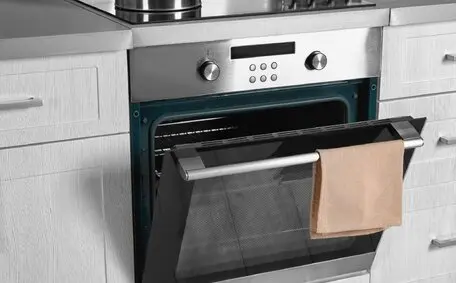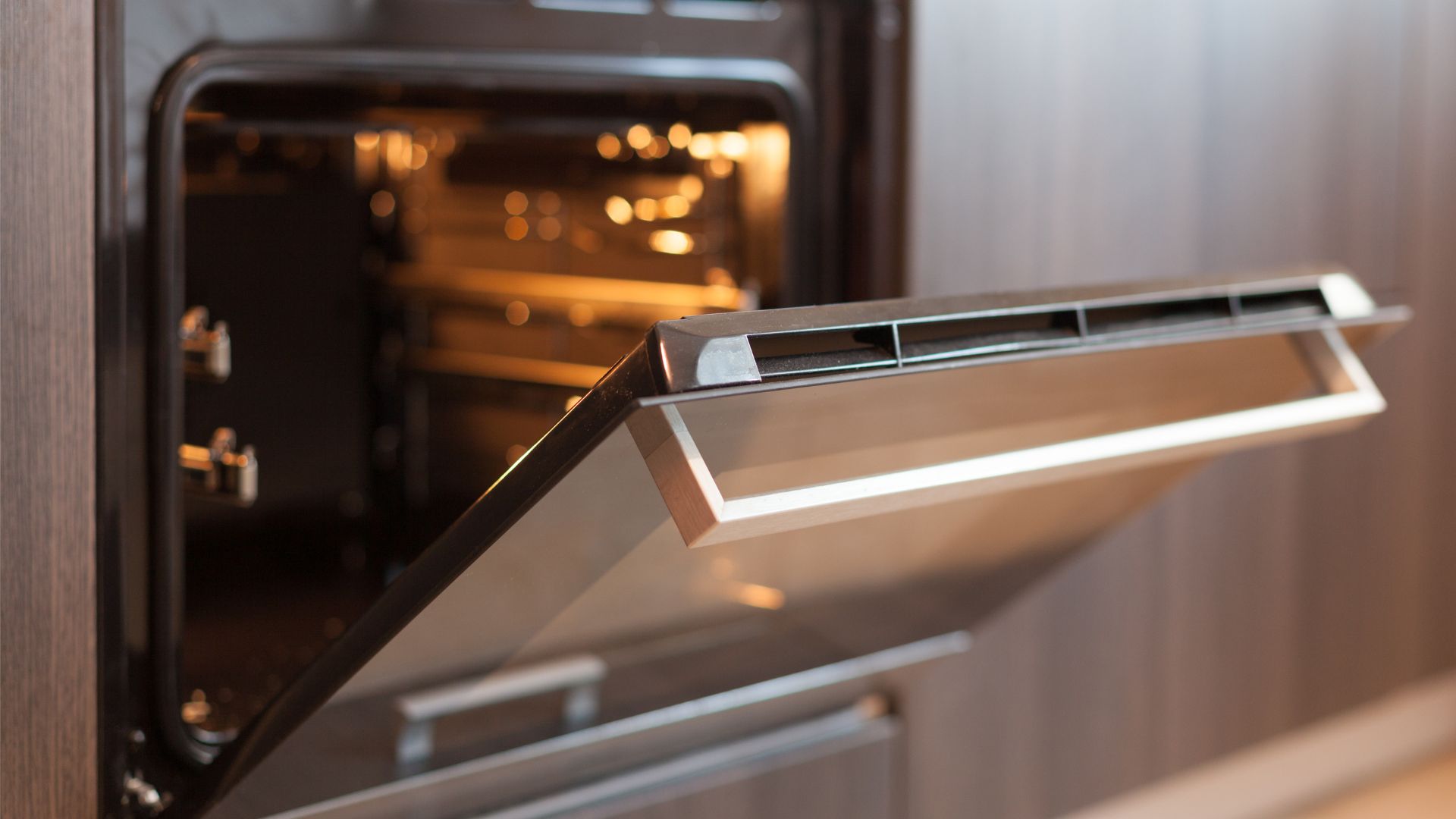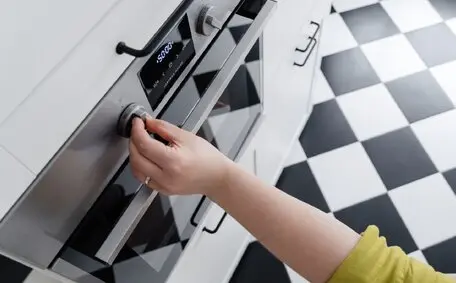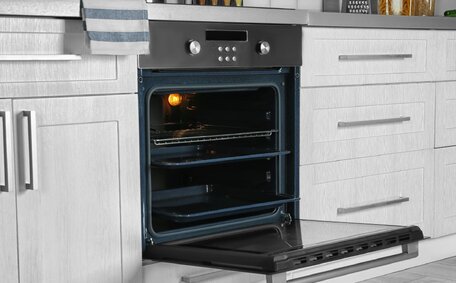According to industry reports, over 30% of household ovens break down within the first seven years due to overlooked faults. While that might sound surprising, it’s a common story in many homes. Electric ovens are essential in most kitchens, yet their subtle signs of trouble often go unnoticed — until dinner ends in disaster.
If your roast is taking longer than usual or your cookies bake unevenly, it might not be your cooking. These could be early warning signs that your oven needs professional attention. Unlike gas ovens, electric models have unique components that wear out over time and affect performance.
Our guide reveals five clear indicators that it’s time to book oven repairs or consider replacing your unit. From strange noises to higher power bills, ignoring these issues could lead to more expensive problems, or worse, safety hazards. Don’t wait for a complete breakdown before acting.
1. Heating Elements Aren’t Doing Their Job
![Inside Turned On Oven Turned Oven]()
Uneven cooking or sluggish heating is often the first red flag that something’s wrong with your electric oven. When meals come out burnt on one side and raw on the other, your heating elements could be to blame.
These elements are crucial for generating consistent heat inside the oven. When they begin to fail, performance drops off quickly, and so does the quality of your cooking.
Common signs of failing heating elements include:
- Food that’s undercooked in the middle or burns around the edges
- The element no longer glows red when turned on
- A noticeable humming or buzzing sound during operation
- The oven is struggling to maintain the correct oven temperature
- Longer cooking times lead to higher electricity bills
A faulty temperature sensor may sometimes contribute to the issue, but the most common cause of uneven heating is a worn or partially damaged heating element.
2. The Oven Door Doesn’t Seal Properly
The oven door does more than just keep the heat in — it plays a critical role in maintaining energy efficiency and stable cooking temperatures. If the seal is worn out or the door doesn’t close properly, heat escapes from the oven cavity, making it work overtime to cook a basic meal.
This slows down your cooking and increases energy consumption, which can show up in your electricity bills before you notice the problem.
Warning signs your oven door isn’t sealing correctly include:
- The door doesn’t close all the way or pops open slightly during use
- Steam or heat leaks from around the edges of the oven door
- Warping or visible damage to the door frame
- Food is taking longer to cook, or cooking unevenly
- The oven exterior is getting hotter than usual
A poor seal puts extra strain on the appliance, potentially burning out internal components or triggering more costly faults. This could be the issue if your electric oven isn’t as energy-efficient as it once was.
If repairs aren’t feasible, it might be time to consider a new oven.
3. Strange Sounds During Operation
![Electric Oven Open Door Electric Oven Open Door]()
Electric ovens are designed to run quietly. At most, you should hear a gentle hum or the sound of the internal fan circulating heat. So when odd noises start up during cooking, it’s one of the clearest warning signs that something isn’t right.
Strange sounds that could signal a problem include:
- Rattling or clunking during preheating or use
- A persistent buzzing or humming louder than usual
- Clicking sounds that don’t stop once the oven is on
- Sudden popping noises, especially near the back
These are all common signs of internal faults. They may point to loose wires, a failing fan motor, or worn components. In older ovens, strange sounds often signal that the appliance struggles to keep up, drawing more energy and generating excess heat, which can pressure other appliances.
Ignoring these noises could lead to safety risks or costly breakdowns. If you’re hearing anything out of the ordinary, book oven repairs as soon as possible to prevent further damage.
4. A Sudden Spike in Your Electricity Bills
An unexpected rise in electricity bills is one of the most overlooked warning signs of oven trouble. These bills often creep up slowly until a shocking statement arrives, leaving you wondering what changed.
Electric ovens that aren’t functioning properly tend to draw more power to do the same job. This is especially true for older units or those with worn-out parts.
Common oven issues that cause higher electricity usage include:
- Faulty thermostats forcing the oven to overheat or stay on longer
- Heating elements that no longer heat efficiently
- A damaged oven door seal is letting heat escape
- Internal components are working harder to maintain temperature
These problems may not affect all your oven’s features right away, making them easy to miss. However, they lead to long-term energy waste and can result in expensive repair costs.
If your energy bill has recently jumped and your cooking habits haven’t changed, that’s a strong sign your oven needs attention or a professional inspection.
5. The Oven’s Lifespan Is Nearing Its End
![Turning Knob On Oven Door Turning Knob Oven Door]()
Most electric ovens are designed to last around 10 to 15 years. Performance often declines once your appliance reaches this range due to worn parts and outdated features.
Over time, components like the control panel, thermostat, or heating elements wear out. When this happens, your oven needs to work harder and still delivers inconsistent results.
Signs your oven’s lifespan may be reaching its limit include:
- Food is taking longer to cook or coming out at the wrong temperature
- The control panel or knobs no longer responding properly
- Strange noises are becoming more frequent
- Struggling to find parts for repairs
- Repair costs are creeping up with each fault
It may be more practical to replace the entire appliance at this stage rather than keep patching up individual issues. If your oven’s performance is steadily dropping, seek professional assistance. A faulty thermostat or element could be just the beginning, and a replacement might save you time, money, and hassle long-term.
What You Risk When You Ignore the Warning Signs
Ignoring the top five signs that your oven needs attention can lead to far more than undercooked food. What starts as a minor fault can quickly escalate into a complete breakdown, or worse, a safety hazard. Faulty components may overheat, increasing the risk of fire or permanent damage.
You might notice higher electricity bills without realising your oven is the culprit. Gas or electric, every appliance needs proper care to maintain performance.
Failing to fix early warning signs could mean losing the ability to cook when it matters most. Book oven repairs before small problems lead to bigger ones.
When Your Oven Speaks, Listen
Recognising the five clear signs your electric oven needs repair or replacement can save you from costly surprises, cooking disasters, and potential safety risks. Strange sounds, rising electricity bills, and poor performance are your oven’s way of asking for help. Don’t wait until it completely gives out. Stay ahead of the problem and keep your kitchen running smoothly.
Bright Force Electrical is here when you need us. Our licensed Sydney electricians are experienced in all types of oven repairs and replacements. Reach out today and let us handle the issue before it becomes a bigger problem.











